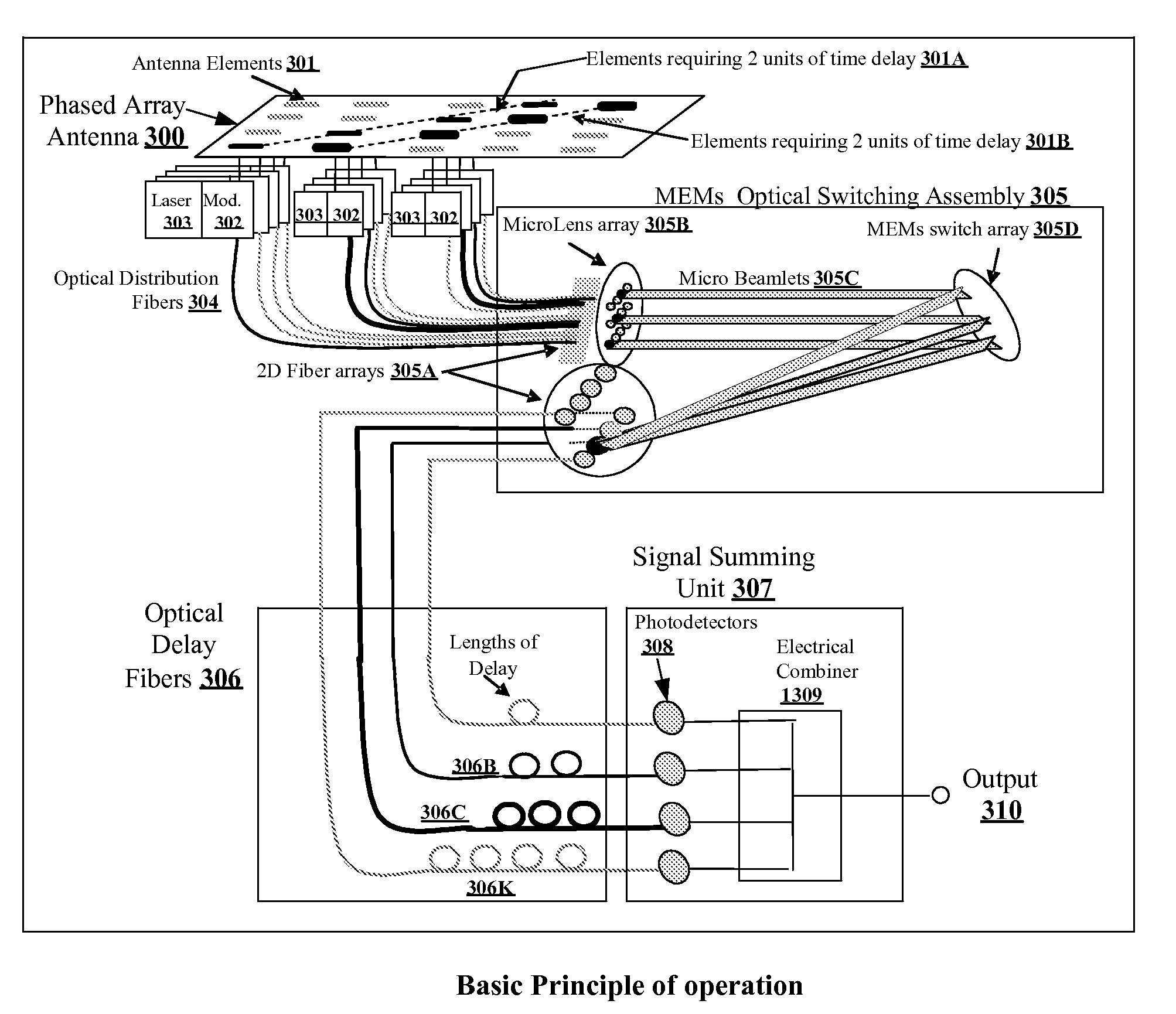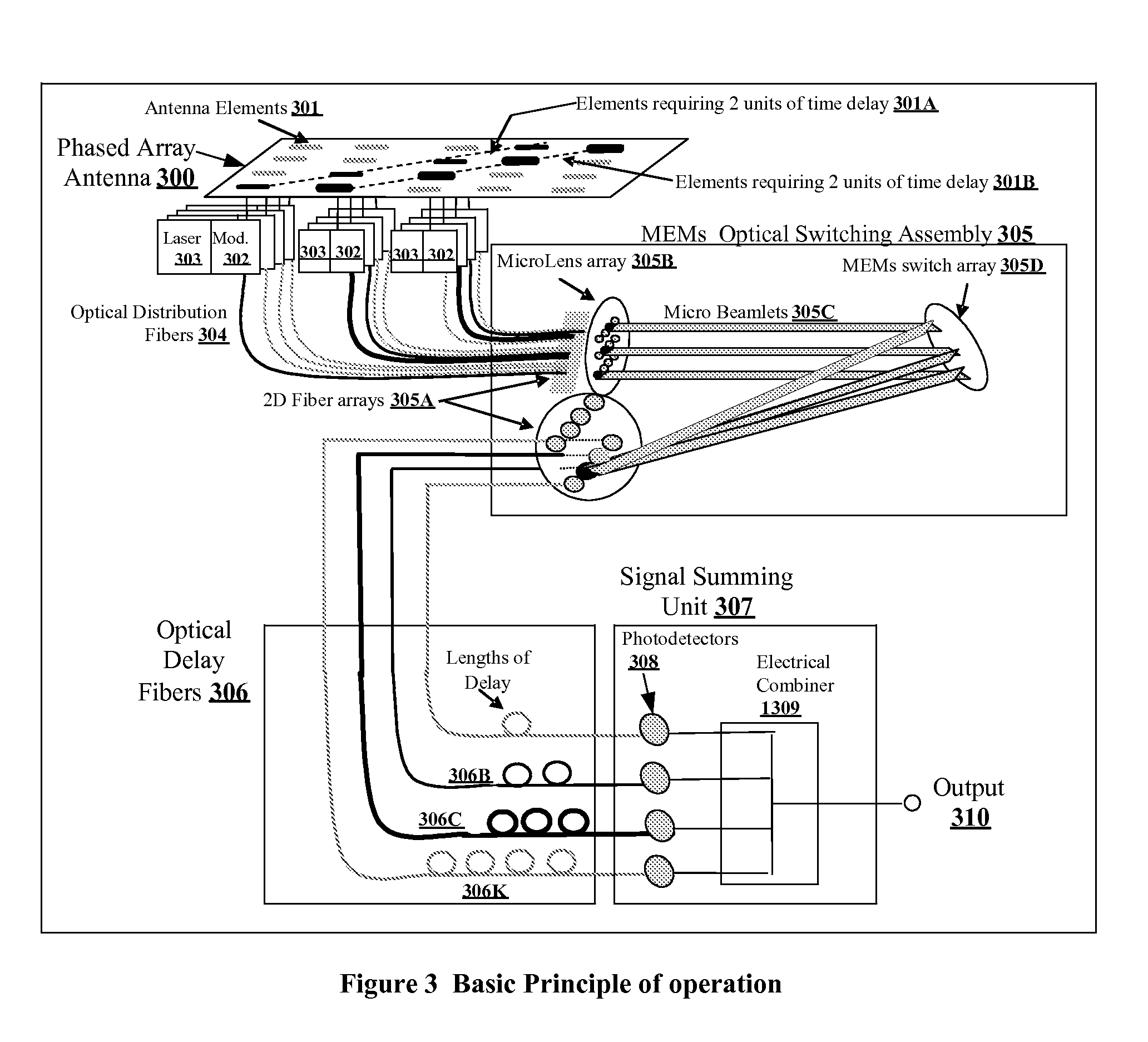Multi Beam Photonic Beamformer
- Summary
- Abstract
- Description
- Claims
- Application Information
AI Technical Summary
Benefits of technology
Problems solved by technology
Method used
Image
Examples
Embodiment Construction
Introduction
[0023]The basic concept for the antenna receive function is shown in FIG. 3. The present invention is for beamforming for phased array antennas. The phased array antenna 300 receives the incident RF / microwave energy. Antenna elements 301 convert the energy from the impinging RF / microwave beam into an electrical signal that drives the optical modulator 302. An optical laser source 303 provides continuous wave (CW) optical power to the modulator. The optical modulator converts the CW optical power into a optically modulated signal corresponding to the electrical drive signal from the antenna element. The modulated optical signal is transported via optical distribution fiber 304 to the MEMs optical switch assembly 305 (MOSA). For an antenna with M antenna elements, there would be M optical modulators and M optical fibers.
[0024]The MOSA has M input fibers. The output of the MOSA is attached to optical delay fibers 306. The number of delay fibers, K, varies from one beamforme...
PUM
 Login to View More
Login to View More Abstract
Description
Claims
Application Information
 Login to View More
Login to View More - R&D
- Intellectual Property
- Life Sciences
- Materials
- Tech Scout
- Unparalleled Data Quality
- Higher Quality Content
- 60% Fewer Hallucinations
Browse by: Latest US Patents, China's latest patents, Technical Efficacy Thesaurus, Application Domain, Technology Topic, Popular Technical Reports.
© 2025 PatSnap. All rights reserved.Legal|Privacy policy|Modern Slavery Act Transparency Statement|Sitemap|About US| Contact US: help@patsnap.com



